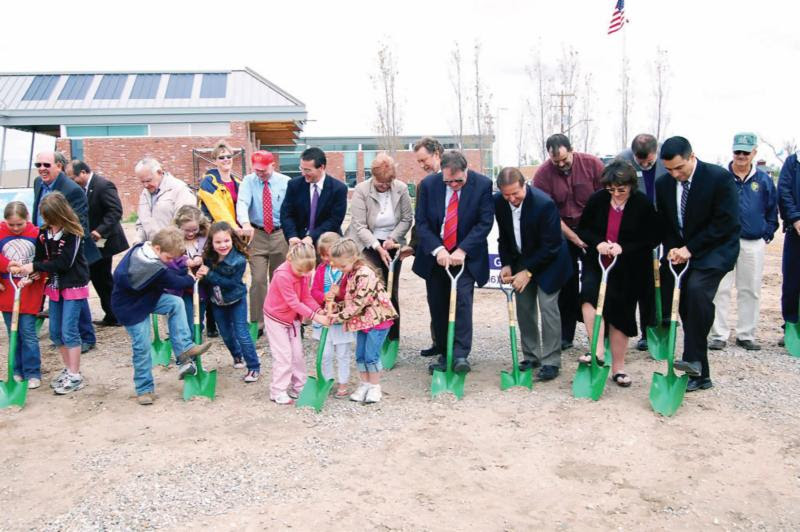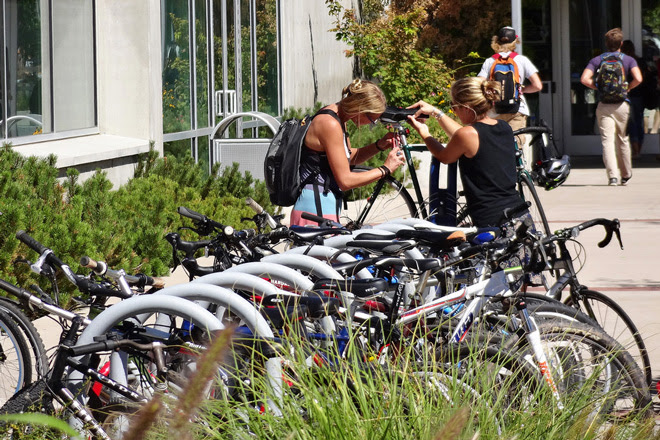July 27, 2017
Topic
“Communities large and small across California, America and the world are taking up the mantle on energy, sustainability and climate solutions. Solutions are ever more viable, and the imperatives to lead ever more pressing. Personal benefits span the gamut from healthier, more livable and prosperous communities to property values and reduced energy costs.”
– Bob Perkowitz, President, ecoAmerica
The Local Government Commission joins forces with Path to Positive Communities to inspire and empower local engagement on climate solutions.
The Path to Positive
How quickly we’re able to achieve meaningful progress on climate solutions will be determined by how long it takes to build a critical mass of mainstream public support.
Positive framing, effective communications and broad engagement are essential to our success to changing people’s minds and public policy. We must engage a broader swath of Americans, in communities large and small, to inspire more people to participate in climate action in ways that are familiar and comfortable to them. We must break through the noise of everyday life with clarity in a language that reaches what people will believe and care about, and empower a diverse spectrum of our citizenry to see that the challenge of solving climate change is a shared cause that lies at the center of their values.
We need visible, trusted leadership, practical policies and inclusive community-wide engagement if local climate solutions are to succeed to addressing the consequences of climate change that affect all of us, especially our most underserved neighborhoods and vulnerable community members.
Lead by Example, and Engage Others to Join You
Local governments have a clear imperative to lead the movement to mitigate climate pollution and implement climate-resilient strategies, and prepare residents and businesses for the anticipated impacts of climate change – some of which are already here.
However, local governments alone, through their fleets and municipal buildings and operations, contribute only a fraction of community-wide climate pollution, and therefore must also actively engage the public to get their support for and participation in local solutions.
Showing how solutions benefit people, families and community well-being, and leveraging the support of trusted leaders from across key community sectors (such as faith institutions, health care and public health providers, higher education and businesses) is key to building community engagement.
The Arts and Sciences of Effective Communications and Engagement
When crafting a communications-and-engagement plan around a volatile issue like climate change, it is important to draw upon more than one’s intuition to get it right. As change agents, our point of view may often differ significantly from what is relevant or important to the audience we seek to engage.
For public engagement to be successful, you need to know your audience – and that requires understanding and appealing to people’s values. Core personal values are established early in life, and are unlikely to change much over time. Consequently, people tend to associate with others who share, support and reinforce our values.
EcoAmerica’s American Climate Values research series delves deeply into common values as a means of crafting communications frames that appeal to core values, reaching people in ways that are familiar and comfortable.
Personal values and behaviors can and do evolve over time. Through regulatory measures and successful communications campaigns, notable and lifesaving progress has been made convincing Americans to buckle up and stop smoking.
As awareness of climate risks and the availability of sensible solutions permeates our culture, leaders can leverage this awareness through persuasive communications and strategic engagement.
Communicating Climate Solutions in the Age of Personal Relevance
Find a message frame that appeals to your audience and keeps them engaged in your message. If we lose our audience, it’s hard to regain their interest and trust.
Early messaging about climate change focused on “doom and gloom” scenarios that were not directly relevant to most Americans’ realities. Shrinking ice caps and stranded polar bears were difficult for most people to relate to directly – and negative messaging generally turns most people off.
Doom and gloom was replaced by promises of a green economy, but, for most people, the green economy didn’t meaningfully improve their own lives.
Today, climate messaging that appeals to the personal relevance of local climate solutions has emerged as the most effective way to engage citizens and stakeholders (including faith institutions, health-care and public-health providers, higher education and businesses) in climate awareness and solutions.
Personal relevance is important on two levels. First, the anticipated risks and impacts of climate change are increasingly evident – most people believe that climate change is real and are experiencing impacts in their own lives. So rather than discuss climate science, focus your message on locally known facts related to climate impacts, like water or air quality, so people can grasp impacts the are relevant to them – and then pivot to solutions.
Second, because climate solutions are now plentiful, it’s easier to show how leadership in local government is resulting in cleaner, healthier and more prosperous lives. People can see local solutions every day – from green buildings to solar installations, from bike lanes to electric car stations, from rain barrels to community gardens.
Public Engagement is a Journey, Not a Destination
A good engagement program should accomplish several goals: showcase a commitment to leading on climate solutions; attract community leaders who visibly support efforts to improve the community; and communicate the benefits of climate solutions that are personally relevant and beneficial to citizens from every part of the community.
Essential Steps for Good Engagement
Make a Commitment
- Describe your climate priorities and inspire others.
- Make your commitment highly visible.
Build a Plan
- Detail specific climate solutions and benefits.
- Inform citizens and stakeholders how they can do their part.
- Track progress along the way.
Engage Others
- Understand your audience and “meet them where they live.”
- Recruit trusted, influential community leaders to join you.
- Engage your community as deeply as possible.
Promote Success
- Share victories and describe benefits.
- Showcase community leaders’ priorities and accomplishments.
Encourage Feedback
- Learn from success – and failure – and make adjustments.
- Raise the bar toward higher goals.
Keep Going
- Climate impacts and solutions will continue to unfold over time.
- New policy, technology and social solutions will arise.
- Refresh your plan and engagement program to leverage opportunities.
Support to Put Communities on the Path to Positive
In an effort to help our members achieve meaningful progress on renewable energy, clean air and climate-change solutions the Local Government Commission is pleased to announce a new partnership with ecoAmerica’s Path to Positive Communities program that can provide additional tools, resources and training to augment your capacity to engage local leaders, institutions, media and communities to build public support and political will for local climate and sustainability progress.
ecoAmerica is a non-profit that uses consumer research and strategic partnerships to create large-scale engagement programs that help build a critical mass of institutional leadership, public support and political will for climate solutions by developing and supporting a network of trusted leaders and institutions who will lead by example and engage stakeholders in climate solutions.
Path to Positive Communities amplifies support for local climate mitigation and resilience efforts through partnerships with trusted institutions that bring together local leaders across key community sectors and provides engagement strategy and content designed to broaden public support for local policies and programs.
Resources
American Climate Values 2014: Psychographic and Demographic Insights: The American Climate Values survey builds on the results of previous ecoAmerica surveys from 2006, 2008 and 2011, with a renewed focus on visible and local climate-change impacts, local and national climate solutions, and narratives, asks and messengers that motivate people to act and lead to changes in public policies.
15 Steps to Create Effective Climate Communications: Drawn from the latest research and real-life experiences, this practical guide outlines a specific, easy-to-follow process for crafting and delivering successful climate-change messages.
Let’s Talk Communities & Climate: Communication Guidance for City and Community Leaders: Featuring talking points, do’s and don’ts, and a sample speech, this guide equips local leaders with the tools to effectively engage their residents and stakeholders on climate solutions.
American Climate Metrics 2016: United States: ecoAmerica’s national climate survey collected data from a broad range of Americans to analyze beliefs and opinions about climate change and climate solutions.
A Message to the New Administration: The Economic Argument for Livable Communities. Livable Places Update. January 23, 2017.
Reason for Optimism: Making Climate Change Progress in A New Political Era. Livable Places Update. November 28, 2016







